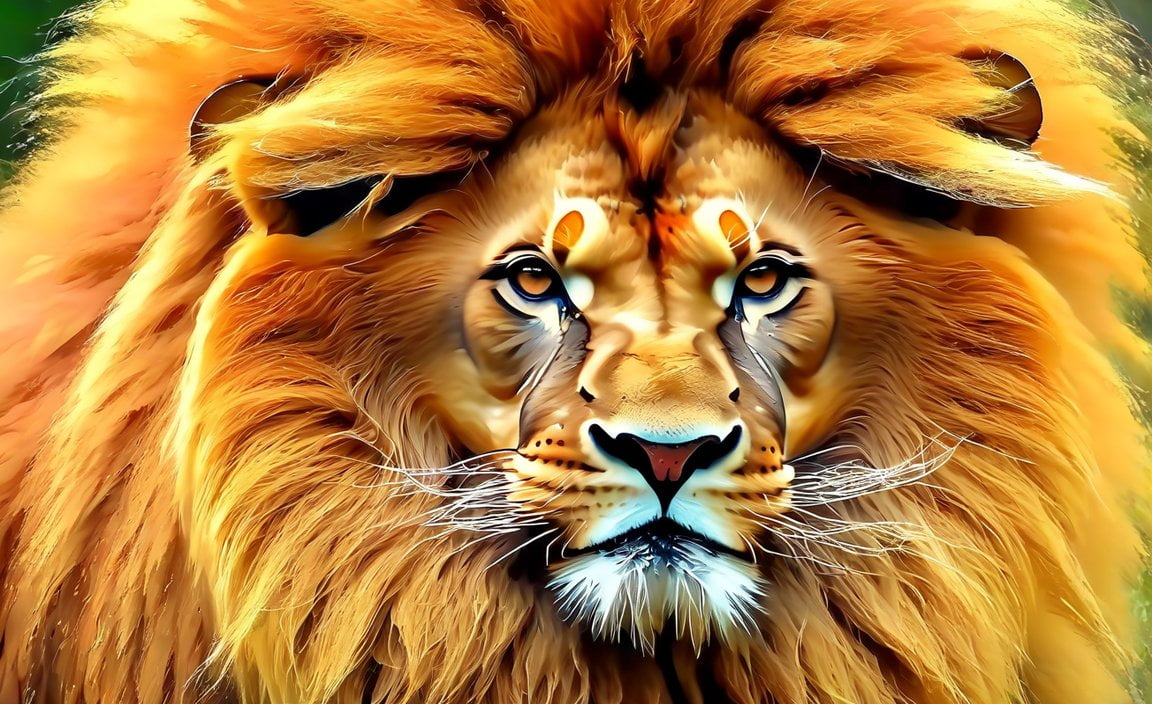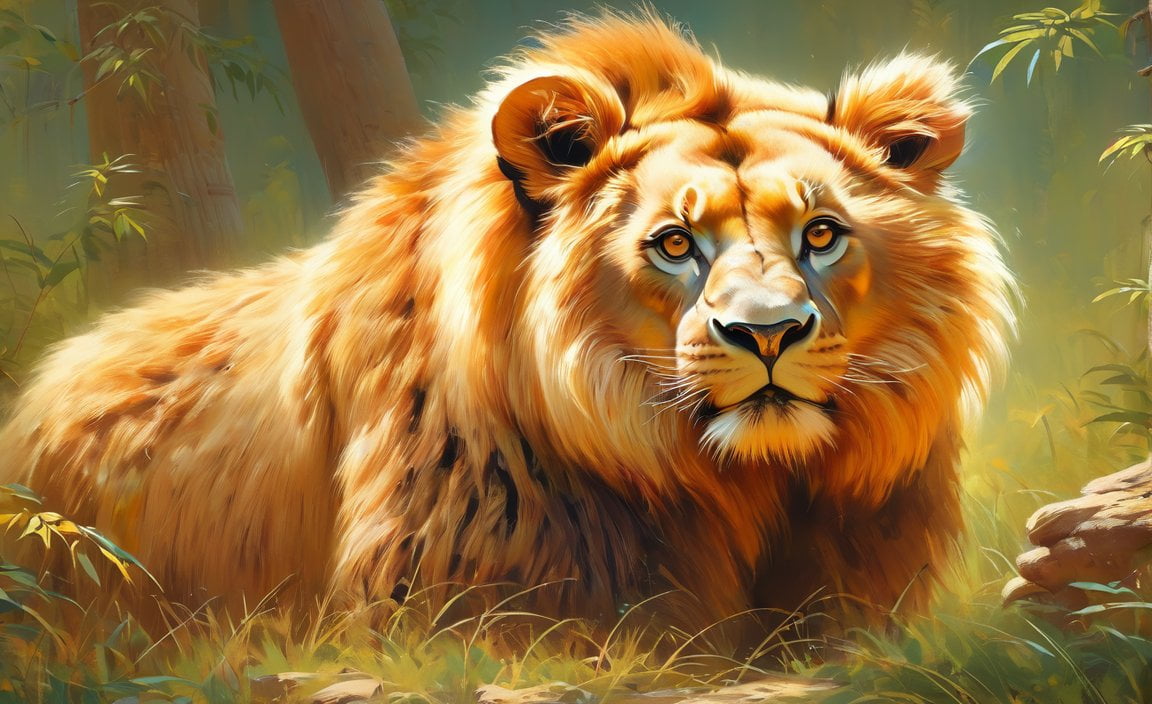Welcome to a captivating journey through the diverse landscapes of Pakistan, where forces of nature collide with the tragic reality of endangered species. In this article, we will delve into the world of Pakistan’s precious wildlife, shining a spotlight on the ten species teetering on the brink of extinction. Brace yourself for a glimpse into the awe-inspiring lives of these remarkable creatures, as we explore the challenges they face and the urgent need for conservation. Join us as we embark on a mission to save Pakistan’s endangered animals.
Key Takeaways:
- According to the International Union for Conservation of Nature (IUCN), there are 8 endangered animals in Pakistan, including the Markhor, Snow Leopard, Asian Leopard, Marco Polo Sheep, Asian Black Bear, Indus River Dolphin, Black Finless Porpoise, and European Otter.
- Other endangered species in Pakistan include the Vole, Baluchistan Forest Dormouse, Mountain Weasel, Asian Elephant, Hog Deer, Asiatic Wild Ass, Woolly Flying Squirrel, Kashmir Muskdeer, Fishing Cat, Axis Deer, Blackbuck, Dhole, Indian Pangolin, Punjab Urial, Sindh Ibex, White-backed Vulture, Black Pond Turtle, and Gharial.
- The Markhor, Pakistan’s national animal, and the Mountain Weasel are both on the brink of extinction.
- Endangered mammals in Pakistan include the Asian elephant, hog deer, Asiatic wild ass, woolly flying squirrel, Kashmir muskdeer, and fishing cat.
- These endangered animals face threats such as habitat destruction, poaching, and climate change.
- Efforts are being made to conserve their habitats and protect them from illegal hunting.
10 Endangered Animals in Pakistan

The diverse ecosystems of Pakistan are home to a remarkable array of wildlife. However, several species are teetering on the edge of extinction, facing numerous threats to their survival. In this article, we will delve into the world of Pakistan’s endangered animals and shed light on the challenges they confront.
1. The Majestic Markhor
Imagine a creature gracefully navigating the rugged mountains of Pakistan, its spiraling horns captivating all who behold them. The Markhor, Pakistan’s national animal, is one such marvelous species. Sadly, the Markhor is on the brink of extinction due to illegal hunting and habitat loss. Efforts are underway to protect this icon of the wild.
2. The Elusive Snow Leopard
In the frigid and unforgiving heights of the Himalayas, a predator silently roams, embodying elegance and stealth. The Snow Leopard, with its thick fur and unique adaptations, is facing multiple challenges, including poaching and habitat degradation. Conservation initiatives aim to safeguard these elusive creatures and preserve the delicate balance of the mountain ecosystems.
3. The Striking Asian Leopard
Picture a predator blending seamlessly into the dense foliage, its spotted coat a symphony of beauty. The Asian Leopard, indigenous to Pakistan’s forests, faces threats such as habitat loss and conflicts with humans. Ensuring their survival demands our attention and collective action.
4. The Majestic Marco Polo Sheep
Imagine witnessing a herd of majestic sheep traversing the rugged terrain of Pakistan’s northern landscapes. The Marco Polo Sheep, named after the famous explorer, faces challenges such as hunting and habitat degradation. Preserving their habitat and implementing sustainable practices can secure their future.
5. The Enigmatic Asian Black Bear
Deep in the forests of Pakistan, the Asian Black Bear roams, exhibiting both strength and vulnerability. These bears are victims of habitat loss, illegal hunting, and the illegal wildlife trade. Conservation efforts not only protect these magnificent creatures but also contribute to the preservation of their habitat.
6. The Graceful Indus River Dolphin
Imagine the serene waters of the Indus River, and within them, a playful aquatic mammal emerges, captivating all who catch a glimpse. The Indus River Dolphin, a symbol of Pakistan’s natural heritage, faces threats like water pollution and habitat fragmentation. Safeguarding their habitats and promoting sustainable river management are critical for their survival.
7. The Endearing Black Finless Porpoise
In the coastal waters of Pakistan, an endearing creature glides through the waves, its playful antics bringing joy to all who encounter it. The Black Finless Porpoise faces risks such as pollution, overfishing, and habitat destruction. Implementing responsible fishing practices and protecting their coastal habitats are imperative for their survival.
8. The Charming European Otter
Imagine a pristine riverbank where a delightful otter frolics, its sleek body smoothly slipping through the water’s surface. The European Otter, found in Pakistan’s rivers and wetlands, confronts challenges such as habitat loss and pollution. Preserving their habitats and mitigating human impact are crucial for their survival.
9. The Vulnerable Vole
In the lush meadows and grasslands of Pakistan, a small creature scurries, playing an integral role in the ecosystem’s delicate balance. The Vole, a small mammal that serves as prey for larger predators, faces threats such as habitat loss and agriculture expansion. Conserving their habitats and protecting the interconnected web of life are essential.
10. The Baluchistan Forest Dormouse
Imagine exploring the forests of Baluchistan, where a tiny dormouse gracefully leaps from branch to branch, leaving no trace of its presence. The Baluchistan Forest Dormouse, with its nocturnal habits and arboreal lifestyle, faces challenges such as deforestation and habitat fragmentation. Protective measures and reforestation efforts are crucial for their survival.
As we explore Pakistan’s endangered animals, it becomes clear that urgent action is necessary to protect these incredible species. Conservation organizations and government initiatives are working tirelessly to address the threats they face. However, we all have a role to play in preserving our natural heritage. By raising awareness, supporting conservation efforts, and advocating for sustainable practices, we can make a difference and ensure a future where these magnificent creatures continue to thrive in their native habitats. Let us join forces to protect Pakistan’s endangered animals and secure a legacy of biodiversity for generations to come.
Here are some fascinating articles about aquatic animals, sea animals, and endangered animals in India and Arunachal Pradesh. Click on the links below to discover some amazing facts!
10 amazing facts about aquatic animals: Dive into the world of aquatic animals and uncover 10 incredible facts that will leave you in awe.
10 amazing facts about sea animals: Delve into the depths of the sea and explore 10 mind-boggling facts about the mesmerizing creatures that call it home.
10 endangered animals in India: Learn about the vulnerable species that inhabit the diverse landscapes of India and understand the importance of their conservation.
10 endangered animals of Arunachal Pradesh: Discover the unique wildlife of Arunachal Pradesh and the challenges faced by 10 endangered animals in this stunning region.
Happy reading and prepare to be amazed by the wonders of nature!
Description of the First Endangered Animal in Pakistan: Indus River Dolphin

The Indus River Dolphin is a fascinating and highly endangered species found only in the rivers of Pakistan. This unique aquatic mammal has adapted to its riverine habitat over thousands of years and has become an important symbol of Pakistan’s natural heritage.
Habitat: The Indus River Dolphin primarily inhabits the main stem of the Indus River and its tributaries, including the Chenab, Jhelum, and Sutlej rivers. These dolphins have developed specialized adaptations to thrive in these freshwater ecosystems.
Threats: Sadly, the Indus River Dolphin faces numerous threats that put its survival at risk. Water pollution, caused by industrial waste and agricultural runoff, poses a significant danger to their health and habitat. Additionally, habitat fragmentation due to the construction of dams and barrages disrupts their natural movement patterns. The use of fishing nets, accidental capture in irrigation canals, and poaching for their oil and meat further contribute to their decline.
Conservation Efforts: Fortunately, concerted efforts are being made to conserve the Indus River Dolphin and mitigate the threats it faces. The Government of Pakistan, along with various conservation organizations and research institutes, has implemented measures to protect their habitat and raise awareness about their importance. These efforts include establishing protected areas, creating alternative livelihood opportunities for local communities, and enforcing strict regulations against illegal fishing practices. Research and monitoring initiatives also play a crucial role in understanding their population dynamics and supporting conservation strategies.
Key Takeaways:
- The Indus River Dolphin is an endangered species found only in the rivers of Pakistan.
- Its habitat primarily consists of the main stem of the Indus River and its tributaries.
- Water pollution, habitat fragmentation, fishing nets, and poaching are significant threats to its survival.
- Conservation efforts involve habitat protection, raising awareness, and implementing regulations against illegal fishing practices.
- Research and monitoring initiatives contribute to understanding their population dynamics and supporting conservation strategies.
Sources:
– Wikipedia: Indus River Dolphin
– WWF-Pakistan: Indus River Dolphin
Details about the Amur Leopard: A Critically Endangered Big Cat Facing Extinction
The Amur leopard is one of the rarest big cats in the world, with fewer than 100 individuals remaining in the wild. Found in Russia and China, this magnificent species is teetering on the edge of extinction due to habitat loss and poaching.
Unique Characteristics of the Amur Leopard
The Amur leopard possesses several unique characteristics that make it truly special. Here are some of its key features:
Stunning Coat: The Amur leopard sports a beautiful, golden coat adorned with large rosettes, providing excellent camouflage in the forests it inhabits.
Impressive Size: As the embodiment of grace and power, the Amur leopard is larger than other leopard subspecies. Males can weigh up to 90 kilograms (200 pounds) and measure up to 135 centimeters (53 inches) in length.
Adaptations for Cold Climate: Thriving in the harsh climates of the Russian Far East, the Amur leopard has adapted to endure freezing temperatures. It possesses a thick fur coat, long legs for walking through snow, and large paws to distribute weight and prevent sinking.
Conservation Challenges Faced by the Amur Leopard
Sadly, the Amur leopard faces numerous challenges that put its survival at risk:
Habitat Loss: Deforestation and human encroachment are rapidly eroding the Amur leopard’s natural habitat. Forest conversion for agriculture, logging, and infrastructure development has led to fragmentation and destruction, leaving this species with limited suitable living space.
Poaching: Poaching remains a significant threat to the Amur leopard. Its bones, skin, and other body parts are highly valued in traditional medicine and the illegal wildlife trade. Despite strict regulations and international bans, the demand for leopard products continues to drive illegal hunting.
Key Takeaways:
- The Amur leopard is a critically endangered big cat with less than 100 individuals remaining in the wild.
- Its unique characteristics include a stunning coat, impressive size, and adaptations for cold climates.
- The main conservation challenges faced by the Amur leopard are habitat loss and poaching.
- Habitat destruction due to deforestation and human encroachment are shrinking the leopard’s living space.
- Poaching for traditional medicine and the illegal wildlife trade remains a significant threat to the species.
- Urgent conservation efforts are essential to protect the Amur leopard and prevent its extinction.
Citation:
WWF UK: 10 of the World’s Most Endangered Animals
Continuation of the article with specific information about the remaining eight endangered animals in Pakistan
Reptiles
- Testudo horsfieldii is one of the endangered reptile species in Pakistan[^1^].
Birds
The following bird species are among the endangered animals in Pakistan[^1^]:
- Aythya baeri
- Sterna acuticauda
- Threskiornis melanocephalus
- Limosa limosa
- Chaetornis striata
- Catreus wallichii
- Aegypius monachus
- Pelecanus crispus
Other endangered birds in Pakistan include:
- Neophron percnopterus
- Numenius arquata
- Falco peregrinus peregrinus
- Coracias garrulus
- Aythya nyroca
- Ardeotis nigriceps
- Clanga clanga
- Chlamydotis undulata
- Rynchops albicollis
- Clanga hastata
- Gyps indicus
- Ficedula subrubra
- Falco jugger
- Phoeniconaias minor
- Falco naumanni
- Anser erythropus
- Tetrax tetrax
- Locustella major
- Marmaronetta angustirostris
- Anhinga melanogaster
- Mycteria leucocephala
- Columba eversmanni
- Haliaeetus leucoryphus
- Circus macrourus
- Prinia burnesii
- Falco cherrug
- Grus antigone
- Grus leucogeranus
- Vanellus gregarius
- Phylloscopus tytleri
- Tragopan melanocephalus
- Oxyura leucocephala
- Gyps bengalensis
- Indicator xanthonotus[^1^][^2^]
Fishes
- The endangered fish species in Pakistan include:
- Aetomylaeus nichofii
- Thunnus obesus[^1^]
Marine animals
- In the marine ecosystem, some coral species are at risk of extinction. These include:
- Acropora formosa
- Acropora pharaonis
- Acropora hyacinthus
- Acropora horrida
- Acropora granulosa
- Seriatopora caliendrum
- Heliopora coerulea
- Leptoria phrygia
- Anomastraea irregularis
- Erythrastrea flabellata
- Pseudosiderastrea tayami
- Fungia curvata
- Goniastrea peresi
- Goniopora stokesi
- Goniopora lobata
- Goniopora columna
- Hydnophora microconos
- Hydnophora exesa
- Montastrea annuligera
- Montipora venosa
- Montipora stilosa
- Montipora foliosa
- Favites flexuosa
- Favites chinensis
- Favites micropentagona
- Favites halicora
- Galaxea astreata
- Tubipora musica
- Parasimplastrea sheppardi
- Pavona venosa
- Pavona diffluens
- Pavona decussata
- Pavona cactus
- Physogyra lichtensteini
- Platygyra lamellina
- Porites harrisoni
- Porites echinulata
- Psammocora contigua
- Acanthastrea hillae
- Turbinaria reniformis
- Turbinaria peltata[^2^]
Key Takeaways:
– Pakistan is home to several endangered animals, including reptiles, birds, fishes, and marine animals.
– Endangered reptiles in Pakistan include Testudo horsfieldii.
– Numerous bird species, such as Aythya baeri, Sterna acuticauda, and Threskiornis melanocephalus, face the threat of extinction.
– Aetomylaeus nichofii and Thunnus obesus are endangered fish species in Pakistan.
– Coral species like Acropora formosa and Acropora hyacinthus are at risk in Pakistan’s marine ecosystem[^1^][^2^].
Sourced:
[^1^]: ResearchGate: Identification of Endangered Animal species of Pakistan using Sasajiscymnus beetles
[^2^]: National Geographic Society: Endangered Species
FAQ
Q1: What are some of the endangered animals in Pakistan?
A1: Some endangered animals in Pakistan include the Markhor, Snow Leopard, Asian Leopard, Marco Polo Sheep, Asian Black Bear, Indus River Dolphin, Black Finless Porpoise, European Otter, Vole, Baluchistan Forest Dormouse, Mountain Weasel, Asian Elephant, Hog Deer, Asiatic Wild Ass, Woolly Flying Squirrel, Kashmir Muskdeer, Fishing Cat, Axis Deer, Blackbuck, Dhole, Indian Pangolin, Punjab Urial, Sindh Ibex, White-backed Vulture, Black Pond Turtle, and Gharial.
Q2: What are the main threats faced by these endangered animals in Pakistan?
A2: The main threats faced by endangered animals in Pakistan include habitat destruction, poaching, and climate change.
Q3: How many individuals are estimated to be left in the wild for Javan Rhinos and Amur Leopards, two of the world’s most endangered animals?
A3: There are estimated to be only around 60 individuals left in the wild for Javan Rhinos and fewer than 100 individuals remaining for Amur Leopards.
Q4: Why are Mountain Gorillas considered endangered?
A4: Mountain Gorillas are considered endangered due to habitat loss, poaching, and civil unrest in their native regions.
Q5: What is the IUCN Red List of Threatened Species and how does it categorize species?
A5: The IUCN Red List is an important resource for tracking the conservation status of species. It categorizes species into seven levels of conservation, including least concern, near threatened, vulnerable, endangered, critically endangered, extinct in the wild, and extinct. “Extinct in the Wild” species can be reintroduced and move into threatened categories.










